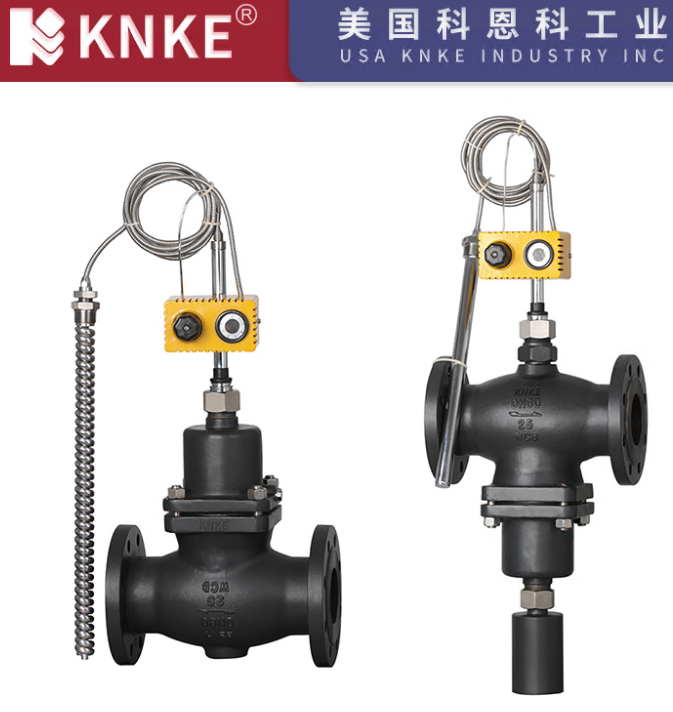Structural Advantages and Disadvantages of Sleeve Control Valves
Sleeve control valves, known for their unique design and structural versatility, are widely used in various industrial applications, particularly where precise flow regulation is essential. One of their key structural features is the streamlined valve body passage, which improves flow efficiency by reducing fluid resistance. This article provides an in-depth analysis of the structural advantages and disadvantages of sleeve control valves to help users better understand their application potential.

1. Basic Structural Features of Sleeve Control Valves
Sleeve control valves are commonly found in industrial process control systems and offer several notable design characteristics:
- Streamlined Flow Path: The valve body is designed with a streamlined internal channel to reduce pressure loss, allowing higher flow capacity and improving overall system efficiency.
- Online Maintenance Capability: Internal components can be replaced without removing the valve body from the pipeline. By simply removing the bonnet, maintenance is simplified, reducing downtime.
- Special Sealing Structure: A flexible metal gasket, typically made from asbestos or PTFE (Polytetrafluoroethylene), is placed between the valve seat and valve body to ensure effective sealing performance.
- Modular Design: In some models, the sleeve and seat ring are integrated. The valve plug is usually cylindrical, which contributes to a compact structure and simplified assembly and maintenance.
2. Key Advantages of Sleeve Control Valves
A. Easy Maintenance
One of the most significant benefits of sleeve control valves is ease of online maintenance. Operators can replace internal components without removing the valve from the pipeline, minimizing shutdown time and reducing maintenance costs.
B. Balanced Design
Some sleeve control valves feature a balanced plug design, where:
- The plug is a hollow cylinder with internal flow channels
- Fluid pressure passes through the plug
- A sliding seal ring is installed in a groove at the top of the sleeve
This configuration neutralizes static fluid pressure acting on the plug, significantly reducing actuator thrust requirements and lowering energy consumption.
C. Adjustable Flow Characteristics
The flow characteristics of a sleeve control valve are primarily determined by the shape of the sleeve’s port. These ports are cast into the sleeve body and can be customized to achieve different flow curves (e.g., linear or equal-percentage), allowing precise control across various operating conditions.
3. Structural Disadvantages of Sleeve Control Valves
A. Leakage Concerns
Despite their balanced design reducing actuator force, sleeve valves typically exhibit higher seat leakage, similar to double-seat valves. This limits their use in zero-leakage applications such as critical fluid containment.
B. Limitations of Unbalanced Designs
Unbalanced sleeve control valves use a guided stem structure:
- The seat ring is shaped to guide the valve plug
- Disc-type plugs can be rotated 180° to reverse the failure mode (fail-open or fail-close)
Though advantageous in slurry applications, this design may lack stability under high differential pressure or large flow rates, potentially impacting long-term performance.
C. Sealing Material Constraints
While flexible metal gaskets offer strong sealing, asbestos-based materials are being phased out in environmentally sensitive environments. Meanwhile, PTFE materials may degrade under high temperatures, limiting their suitability in certain high-temperature applications.
4. Superior Performance in Specific Applications
In slurry applications, unbalanced sleeve control valves demonstrate distinct advantages:
- The stem-guided design resists clogging by solid particles
- Ideal for handling media with abrasives or suspended solids
- Configurable failure modes (fail-safe open or closed) enhance system flexibility and safety
Sleeve control valves play a vital role in modern industrial process control thanks to their modular construction, convenient maintenance, and customizable flow characteristics. However, users must also consider potential drawbacks such as higher leakage and performance limitations under extreme conditions. Choosing between balanced and unbalanced designs based on specific application requirements can help optimize valve performance and ensure reliable operation across diverse industrial environments.
